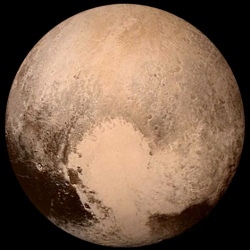
NASA recently noted that the spacecraft’s vantage point is ideal for studying Solar Wind. New Horizons is one of the furthest man-made objects in our solar system, and once it passed Uranus, it turned on an instrument that would allow it to observe solar particles, and provided nearly three years worth of continuous information:
“The instrument was only scheduled to power on for annual checkouts after the Jupiter flyby in 2007,” said Heather Elliott, a space scientist at the Southwest Research Institute in San Antonio, Texas, and lead author on the study. “We came up with a plan to keep the particle instruments on during the cruise phase while the rest of the spacecraft was hibernating and started observing in 2012.”
NASA announced some of their findings back in December, but a new study published in The Astrophysical Journal Supplement provides some greater detail on what they found.
The probe helped to observe some of the structures formed by solar wind and how they change as they move away from the sun:
The New Horizons data show that the space environment in the outer solar system has less detailed structure than space closer to Earth, since smaller structures tend to be worn down or clump together as they travel outwards, creating fewer, but bigger, features.
Scientists also believe that they might have spotted early precursors to what form anomalous cosmic rays, observed by the Voyager 2 space probe, and which might help form the boundary between our solar system and interstellar space. Understanding how these cosmic rays form is important, as they post a hazard to astronauts in orbit.
